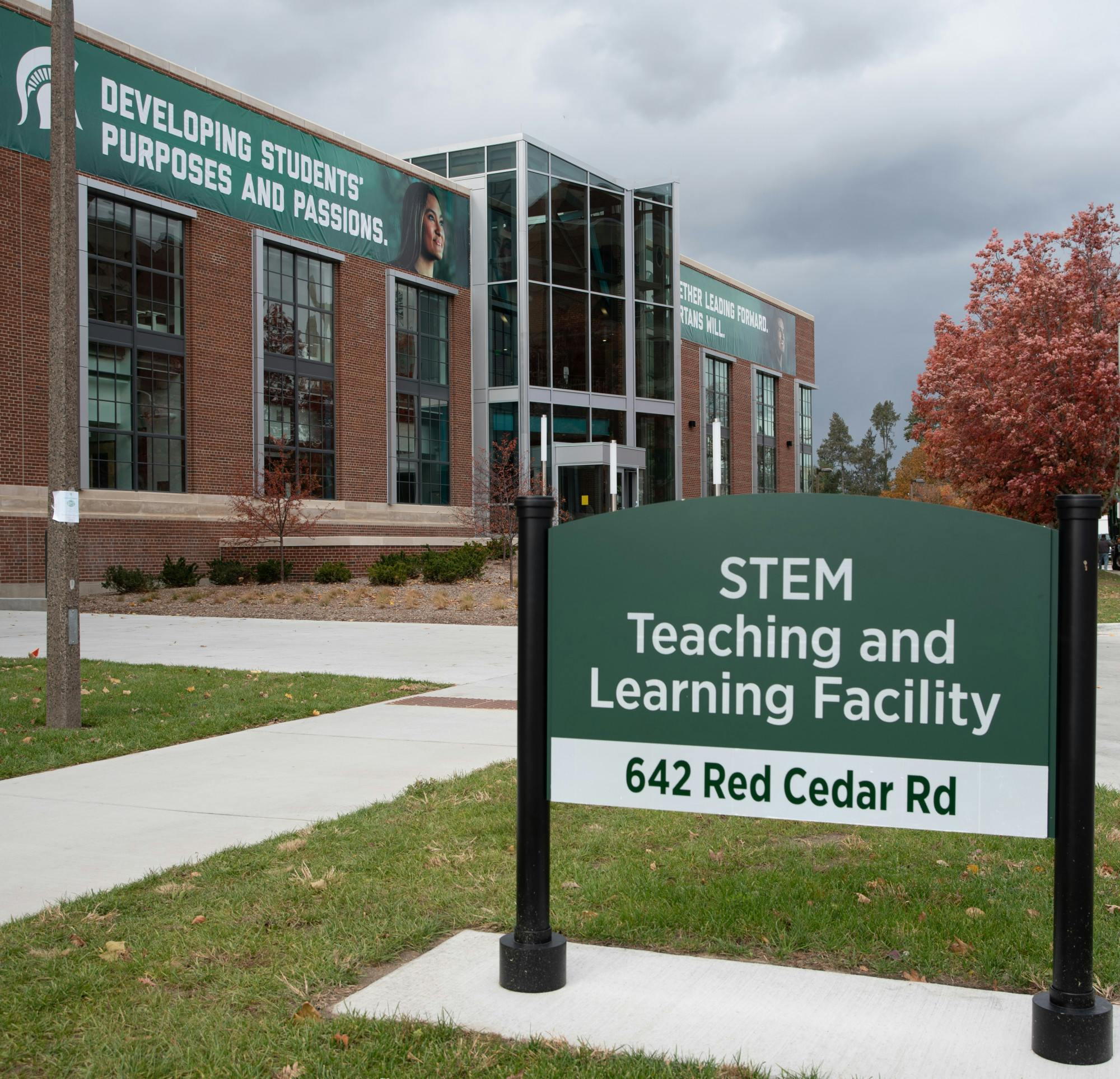Students visiting the brand-new STEM Teaching and Learning Facility on MSU's campus may notice a new, potentially revolutionary technology has been used in the construction of the building — wood.
The building, which was officially unveiled this fall, is partially constructed from mass timber, a relatively new building material that is composed of many thick, compressed layers of softwood, usually bound together with adhesive.
The STEM building on campus is the first mass timber building in Michigan.
“The building was originally not slated for mass timber,” Sandra Lupien, the Director of MassTimber@MSU, said in an email. “A group of academics from the Forestry Department and the School of Planning, Design, and Construction suggested the idea. ... and provided knowledge and resources to support the decision-making process.”
Lupien described the building as a mass timber and steel hybrid.
The material is cost-effective, energy-efficient, and is usually faster to build with than more common materials such as concrete and steel. Lupien said those working on the construction of the building said having the knowledge and experience of working with mass timber at the beginning of the project could have cut the project timeline by anywhere between four to eight weeks.
Lupien said mass timber responds well in fire tests, during which materials are typically burned at a high temperature for two hours, where the outer layers of the wood char but the structural integrity remains in place.
“In this building in the stair towers, they only needed to do five layers, but they added two layers for fire resistance and fire rating,” Lupien said. “If you had a mass timber building, there was a fire and some of the layers of your mass timber charred, you could theoretically remove them and replace them and just repair it without losing your structural integrity.”
Mass timber is also helpful in reducing emissions of the greenhouse gases that contribute to global climate change. Using mass timber in place of materials such as concrete and steel can help in a myriad of ways, from offsetting the emissions-intensive process required to manufacture them. The use of mass timber as a building material also ensures the carbon, methane and other gases that trees release as they decompose do not get released into the atmosphere.
Lupien said the material came into existence in Austria around the 1980s and 1990s, but it is still new in the United States.
One of the concerns of mass timber is the potential toxicity of the adhesives used to bind the layers of wood together. However, Lupien said the benefits of mass timber outweigh the potential risks.
“I talked to somebody that I was introduced to that was a green chemist. ... He told me that in the building, you're not really exposed, most of the off-gassing of the chemicals happens before it comes to your building site,” Lupien said. “Mostly in the manufacturing process, we don't like that for the people who are manufacturing it either. Hopefully, factories have safety practices dialed in and are protecting their employees from exposure.”
Lupien also said research is being done at MSU on different types of adhesives made from lignin, a chemical that is extracted from trees.
Lupien said the wood used in the STEM building is black spruce, and it is certified by the Forest Stewardship Council, an independent nonprofit organization that certifies wood based on how sustainably it's grown and harvested. The wood comes from a manufacturer in Quebec called Nordic Structures.
“In fact, MSU and the five project partners who built this building just won a leadership award from the Forest Stewardship Council for using all Forest Stewardship Council wood in the mass timber in this building,” Lupien said.
MassTimber@MSU is a collaboration between the MSU Department of Forestry, the School of Planning, Design and Construction and MSU Extension.
“Essentially, what we do is survey the mass timber landscape in Michigan and the surrounding region,” Lupien said.
She said the program seeks builders that may be interested in working with mass timber and helps to remove any barriers to working with the material the builder may face. Lupien also said if builders are not considering mass timber, the program may introduce it as an option.
“When we think about mass timber, we’re thinking about uniting forests with our built environment,” Lupien said.
Support student media!
Please consider donating to The State News and help fund the future of journalism.
Discussion
Share and discuss “Mass timber: How MSU's STEM building utilized new sustainable wood product” on social media.





